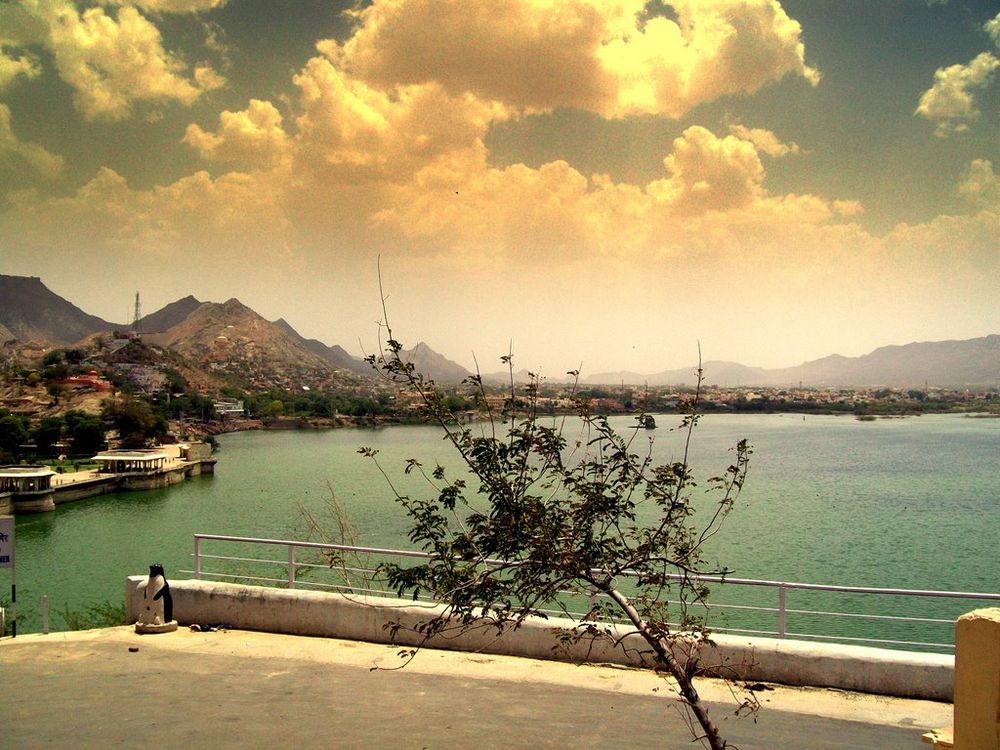Situated in a picturesque manner at the foot of a hill, Ajmer is a very ancient city and a point of pilgrimage for Muslims. A curious anomaly in a land of Hindu Rajputs, it is this that gives the key to its stormy history. As a common religious center of note-and thus an apple of contention-it changed hands repeatedly during the checkered annals of its existence. It was not till the 12th century that Ajmer emerged as an important city during the reign of King Ajayraj.
Then, in 1559, it was annexed by Akbar, who made it a place of royal residence. It was he who built the fort that to this day dominates the city. He realized the strategic importance of Ajmer, commanding the main routes from the north and holding the key to the conquest of Rajputana and Gujarat. In consequence he made the city his military headquarters. At the same time it became the shrine of a great Muslim saint, Khwaja Muin-Ud-Din Chishti and was visited every year by the emperor. Frequented later by Shahajahan, it owes its beautiful marble pavilions on the shores of the lake to his tender care.
Dargah Sharif
It was in Ajmer that Sir Thomas Roe, the ambassador of King James I of England, presented his credentials to the Emperor Jahangir in 1616. It was here too that the War of Succession, fought between the sons of Shahajahan, came to an end with the decisive victory of Aurangzeb. Ajmer is one of the holy places of India and to this day pilgrims arrive yearly from all the four corners of the land, including Pakistan. Akbar himself made many pilgrimages, quite a few of them on foot.
Adhai-din-ka-Jhonpda
Close to Ajmer, at the foot of Taragarh hill, stands a rare specimen of ancient Hindu masonry, Adhai-din-Ka-Jhonpda. James Tod in his standard work of a hundred years back, waxes eloquent about its “gorgeous prodigality of ornament, richness of tracery, delicate sharpness of finish, laborious accuracy of workmanship”. He sums it up with the statement that “this building may justly vie with the noblest buildings which the world has yet produced”. Originally constructed for a Sanskrit College, it was converted later into a mosque. Two short minarets with inscriptions were introduced upon the scene.
Lord Gokarneswar Temple
Few sights in Ajmer afford such great delight to the traveler as the cool waters of Anasagar. This artificial lake was formed in the first half of the 12th century by the Rajput King Anaji by raising a vast embankment between two hills. The Moghul emperors were subsequently so entranced by this landscape that one after other, they embellished it with gardens, a long parapet and five elegant pavilions of polished white marble.
Lake Anasagar at sunset
Vast crowds of devout Hindus assemble yearly at the autumn fair to bathe in Pushkar Lake’s holy waters. According to scared scripts Brahma-first of the Hindu Trinity-on passing this place one day let slip from his hand a lotus flower. Water sprang forth immediately from the spot where the petals fell. The lake was formed; it was called Pushkar, which means lotus. Many are the temples that surround the magic mere-one of them dedicated to Brahma. Curious to relate, there are only a few of these in all India.
























